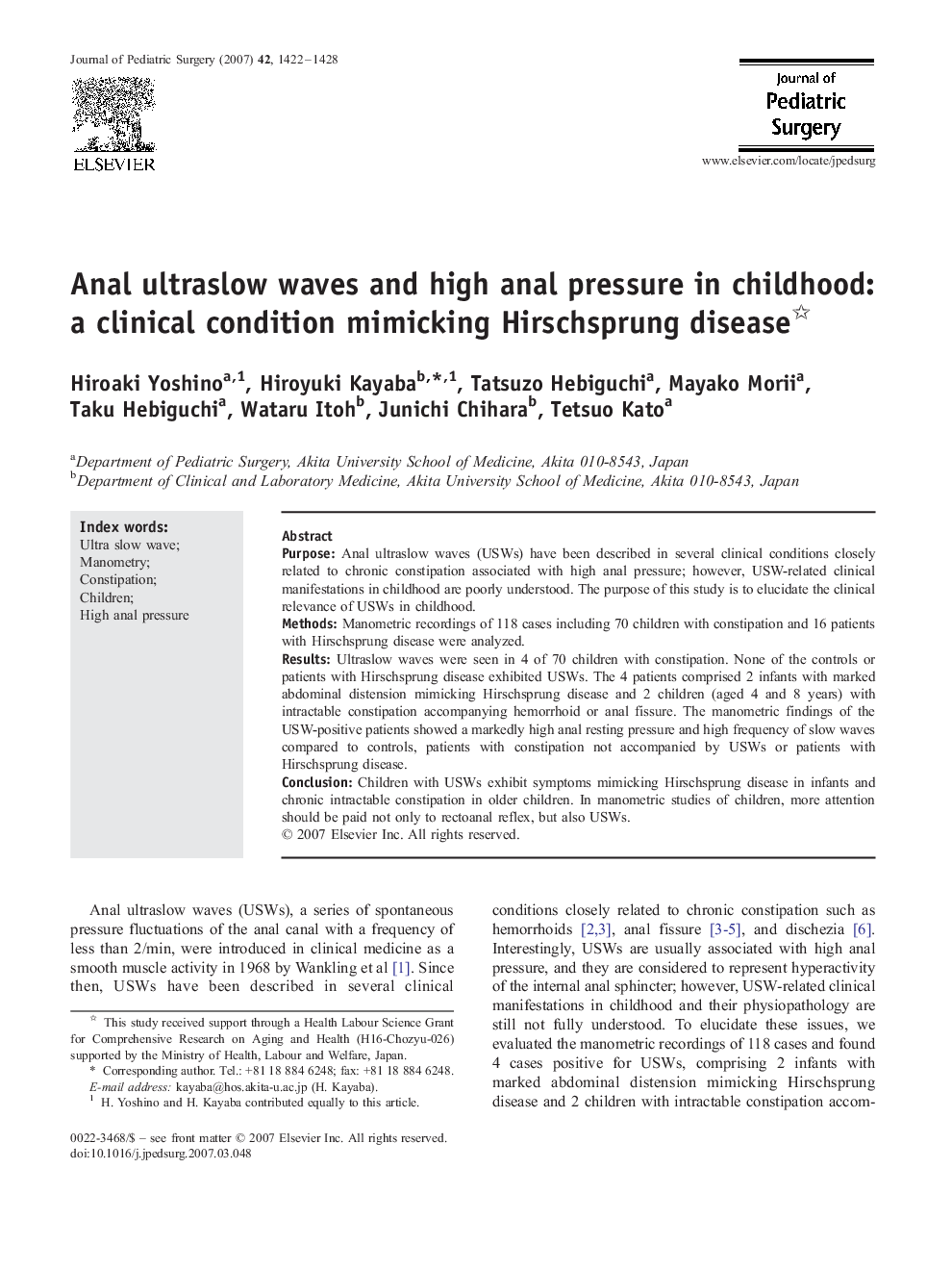| Article ID | Journal | Published Year | Pages | File Type |
|---|---|---|---|---|
| 4160365 | Journal of Pediatric Surgery | 2007 | 7 Pages |
PurposeAnal ultraslow waves (USWs) have been described in several clinical conditions closely related to chronic constipation associated with high anal pressure; however, USW-related clinical manifestations in childhood are poorly understood. The purpose of this study is to elucidate the clinical relevance of USWs in childhood.MethodsManometric recordings of 118 cases including 70 children with constipation and 16 patients with Hirschsprung disease were analyzed.ResultsUltraslow waves were seen in 4 of 70 children with constipation. None of the controls or patients with Hirschsprung disease exhibited USWs. The 4 patients comprised 2 infants with marked abdominal distension mimicking Hirschsprung disease and 2 children (aged 4 and 8 years) with intractable constipation accompanying hemorrhoid or anal fissure. The manometric findings of the USW-positive patients showed a markedly high anal resting pressure and high frequency of slow waves compared to controls, patients with constipation not accompanied by USWs or patients with Hirschsprung disease.ConclusionChildren with USWs exhibit symptoms mimicking Hirschsprung disease in infants and chronic intractable constipation in older children. In manometric studies of children, more attention should be paid not only to rectoanal reflex, but also USWs.
